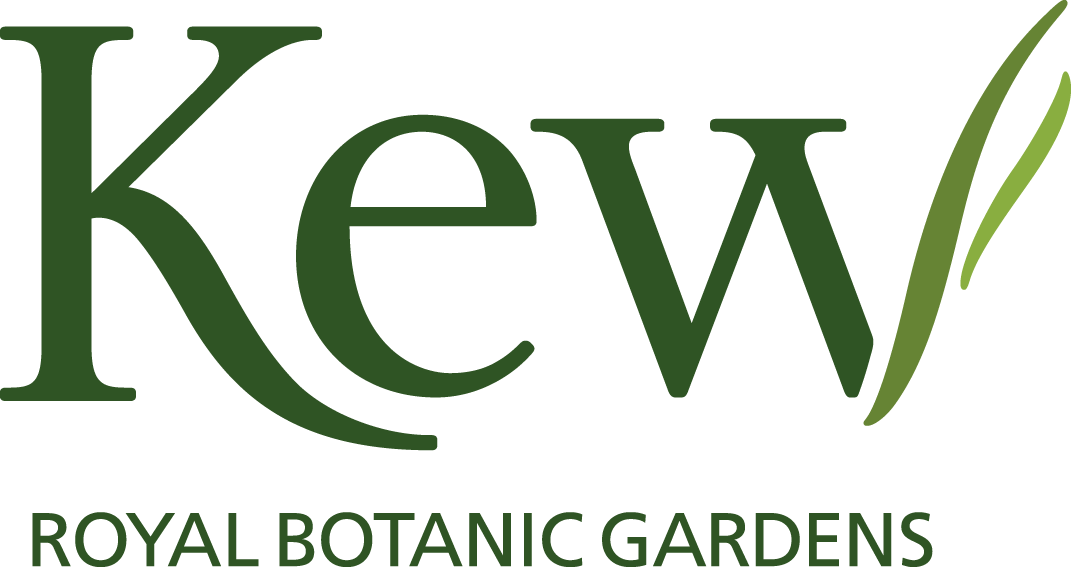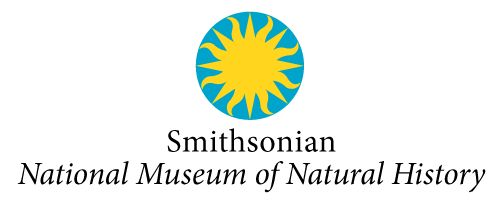Difference between revisions of "News 2013"
(Created page with "=25. September 2013 - Kew, Royal Botanic Gardens joins the DNA Bank Network/GGBN= center|300px The DNA Bank Network proudly welcomes its 9th part...") |
|||
| Line 60: | Line 60: | ||
=18.-19. April 2013 - GGI Capturing Genomes Workshop at Smithsonian= | =18.-19. April 2013 - GGI Capturing Genomes Workshop at Smithsonian= | ||
This workshop is led by the Smithsonian’s Global Genome Initiative, which aims to preserve the genomic diversity of life on earth for future research and discovery. Steps toward this vision will be guided by four collaborative activities: Biodiversity Research and Collecting, Biorepositories (Global Genome Biodiversity Network), Bioinformatics and Biotechnology, and Engagement. Preservation of genomic diversity starts with collaborative collecting and collection management efforts, including appropriate access and benefits sharing (ABS). Online access to these resources for genomic research, including genomic samples, vouchers, molecular analysis, publications, and images requires a federated information infrastructure. The sequencing of earth’s genomes requires the genomic samples, biotechnology, and computational support. The future of genomics requires a well trained workforce, fostered through fellowships across partner organizations. The Global Genome Initiative will support these activities by providing the organizational capacity and advocacy for genomic research in the changing field of biodiversity research. This workshop will kick start the collaborative collecting efforts of GGI. | This workshop is led by the Smithsonian’s Global Genome Initiative, which aims to preserve the genomic diversity of life on earth for future research and discovery. Steps toward this vision will be guided by four collaborative activities: Biodiversity Research and Collecting, Biorepositories (Global Genome Biodiversity Network), Bioinformatics and Biotechnology, and Engagement. Preservation of genomic diversity starts with collaborative collecting and collection management efforts, including appropriate access and benefits sharing (ABS). Online access to these resources for genomic research, including genomic samples, vouchers, molecular analysis, publications, and images requires a federated information infrastructure. The sequencing of earth’s genomes requires the genomic samples, biotechnology, and computational support. The future of genomics requires a well trained workforce, fostered through fellowships across partner organizations. The Global Genome Initiative will support these activities by providing the organizational capacity and advocacy for genomic research in the changing field of biodiversity research. This workshop will kick start the collaborative collecting efforts of GGI. | ||
| + | |||
| + | [[category: Help]] | ||
| + | [[category: News]] | ||
Latest revision as of 12:11, 9 January 2023
Contents
- 1 25. September 2013 - Kew, Royal Botanic Gardens joins the DNA Bank Network/GGBN
- 2 1. September 2013 - SYNTHESYS III started
- 3 16. August - 2013 Ruder Boskovic Institute joins the DNA Bank Network and GGBN
- 4 16. July 2013 - GGBN 2014 First Conference Announcement: Biodiversity Biobanking: Building a Trusted Community of Accessible Genomic Collections
- 5 11. July 2013 - The National Museum of Natural History, Smithsonian Institution makes its genomic collections discoverable for research
- 6 28. May 2013 - Senckenberg Frankfurt and BiK-F join the DNA Bank Network
- 7 22. April 2013 - GGBN User Needs Survey/Participation kindly requested
- 8 18.-19. April 2013 - GGI Capturing Genomes Workshop at Smithsonian
25. September 2013 - Kew, Royal Botanic Gardens joins the DNA Bank Network/GGBN
The DNA Bank Network proudly welcomes its 9th partner! The Royal Botanic Garden, Kew is a world leader in plant science and conservation. Throughout its history, the Royal Botanic Gardens, Kew has made important contributions to increasing the understanding of the plant kingdom with many benefits for mankind. Today it is still first and foremost a scientific institution. With its collections of living and preserved plants, of plant products and botanical information, it forms an encyclopaedia of knowledge about the plant kingdom. Kew holds one of the oldest DNA Banks worldwide with approximately 45,000 DNA samples that can be ordered from Kew directly. We are currently working on making Kew's DNA collection available via the GGBN/DNA Bank Network's data portal too.
1. September 2013 - SYNTHESYS III started
SYNTHESYS (Synthesis of systematic resources) is a 4 years EC funded project and will create an accessible, integrated European resource for researchers in the natural sciences in Europe and globally. Building on the success of the previous SYNTHESYS IA, the NA will focus on improving collections management of new physical and virtual collections. By focusing the JRA on extracting and enhancing data from digitised collections, SYNTHESYS3 will increase the accessibility of these 340 million strong collections. A wide range of services and access – both physical and digital – will be provided to a broad range of scientific Users (from biological and geological related disciplines) in a consistent and accessible way. The natural history collections, held within the museums and herbaria, of Europe are World-class in terms of their magnitude and taxonomic coverage. They represent a resource unique in Europe as a model of the diversity of life on earth and are a physical dataset enabling Users to research how the human activity (including climate change) is having an increasingly negative impact on the diversity and distribution of biodiversity, which is threatening the continued provision of ecosystem services essential to human well-being.
One part of the NA2 is to develop strategic priorities for molecular related NH collections, in particular to get involved partner collections online via the GGBN/DNA Bank Network data portal. The following partners participate in NA2 task 2:
Natural History Museum (London), Royal Botanic Gardens Kew, Royal Botanic Garden Edinburgh, Museum National d’Histoire Naturelle, The University of Copenhagen, Consejo Superior de Investigaciones Científicas, The Swedish Museum of Natural History, Naturalis Biodiversity Centres, Freie Universität Berlin/Botanic Garden and Botanical Museum Berlin-Dahlem, Museum für Naturkunde, Royal Belgian Institute of Natural Sciences, Royal Museum for Central Africa, National Museum (Prague), Naturhistorisches Museum Wien
16. August - 2013 Ruder Boskovic Institute joins the DNA Bank Network and GGBN
The Ruder Boskovic Institute (RBI) is the leading Croatian national research institute for natural and live sciences. Its Center for Marine Research (Centar za Istrazivanje Mora, CIM) is located in Rovinj (Croatia). The CIM investigates marine ecosystems with a special focus on the Northern Adriatic Sea. The CIM holds a live cell culture collection of marine phyto- and zooplankton with a special focus on toxic species. This culture collection is accompanied by a research collection of corresponding DNA samples. The RBI and its CIM make their collection of DNA samples and corresponding live cell cultures available by using BioCASe through the DNA Bank Network and the Global Genome Biodiversity Network (GGBN) as well as the first data provider from Croatia at Gobal Biodiversity Information Facility (GBIF).
16. July 2013 - GGBN 2014 First Conference Announcement: Biodiversity Biobanking: Building a Trusted Community of Accessible Genomic Collections
During the week of June 30 2014, the Global Genome Biodiversity Network (GGBN) will hold the first international conference on biodiversity repositories. Please see full conference announcement here [1].
Conference goals include:
- Engage new members and strengthen the community by promoting collaborations among biorepositories
- Advance the field of genomic collections, data management, and accessibility
- Promote international networking compliant with ABS and CBD
- Link people, communities, platforms, and collections
Please join the Global Genome Biodiversity Network in London to communicate ideas, new tools, expertise on biodiversity biobanking, and to encourage natural history collections to make databases of genomic collections public and broadly available for research while respecting the spirit of the Nagoya Protocol. A second conference announcement with a full agenda, invited speakers, and call for abstracts will be posted on the upcoming conference website on 1 November 2013.
11. July 2013 - The National Museum of Natural History, Smithsonian Institution makes its genomic collections discoverable for research
The National Museum of Natural History is proud to announce that as of July 11, 2013, tissue and DNA samples are being made available through the DNA Bank Network's online database. The data represent the breadth of NMNH collections including birds, insects, spiders, plants, mammals, worms, amphibians, reptiles, fish, and will increase as existing data are migrated to the museum's catalog and inventory systems and as new data are digitized. This work is part of the Museum's efforts in the Global Genome Initiative to make the genomic collections of Global Genome Biodiversity Network (GGBN) members discoverable for research through the Global Genome Biodiversity Network's Data Portal.
28. May 2013 - Senckenberg Frankfurt and BiK-F join the DNA Bank Network
The DNA Bank Network welcomes its seventh partner! The DNA bank of Senckenberg Gesellschaft fuer Naturforschung (SGN) and the Biodiversity and Climate Research Centre (LOEWE BiK-F) has joined the DNA Bank Network and the Global Genome Biodiversity Network on May 28th 2013. The DNA bank of Senckenberg (SGN) and the Biodiversity and Climate Research Centre (LOEWE BiK-F) store DNA from all organismal groups for research purposes. At present, the fast growing collection numbers about 5000 DNA samples. For reference purposes, corresponding voucher material for almost all DNA samples is kept in the collections of the SGN. To share the data via the DNA Bank Network's webportal BioCASe is used and the DNA data have been mapped with ABCDDNA. For now a test set of 1.100 DNA samples of Senckenberg Frankfurt and BiK-F is available via our webportal.
22. April 2013 - GGBN User Needs Survey/Participation kindly requested
Founded in 2011, The Global Genome Biodiversity Network (GGBN) is a networked community of biorepositories that provides value to its users by making genomic collections discoverable for research. We are reaching out to you as a potential user, contributor, or partner biorepository in order to better understand the needs of our audiences.
Please take a few moments to answer the questions at the following link: Click here to take survey
If you know someone who may have an interest in GGBN, please send them the link to this survey.
This survey will be open through May 6th.
18.-19. April 2013 - GGI Capturing Genomes Workshop at Smithsonian
This workshop is led by the Smithsonian’s Global Genome Initiative, which aims to preserve the genomic diversity of life on earth for future research and discovery. Steps toward this vision will be guided by four collaborative activities: Biodiversity Research and Collecting, Biorepositories (Global Genome Biodiversity Network), Bioinformatics and Biotechnology, and Engagement. Preservation of genomic diversity starts with collaborative collecting and collection management efforts, including appropriate access and benefits sharing (ABS). Online access to these resources for genomic research, including genomic samples, vouchers, molecular analysis, publications, and images requires a federated information infrastructure. The sequencing of earth’s genomes requires the genomic samples, biotechnology, and computational support. The future of genomics requires a well trained workforce, fostered through fellowships across partner organizations. The Global Genome Initiative will support these activities by providing the organizational capacity and advocacy for genomic research in the changing field of biodiversity research. This workshop will kick start the collaborative collecting efforts of GGI.



